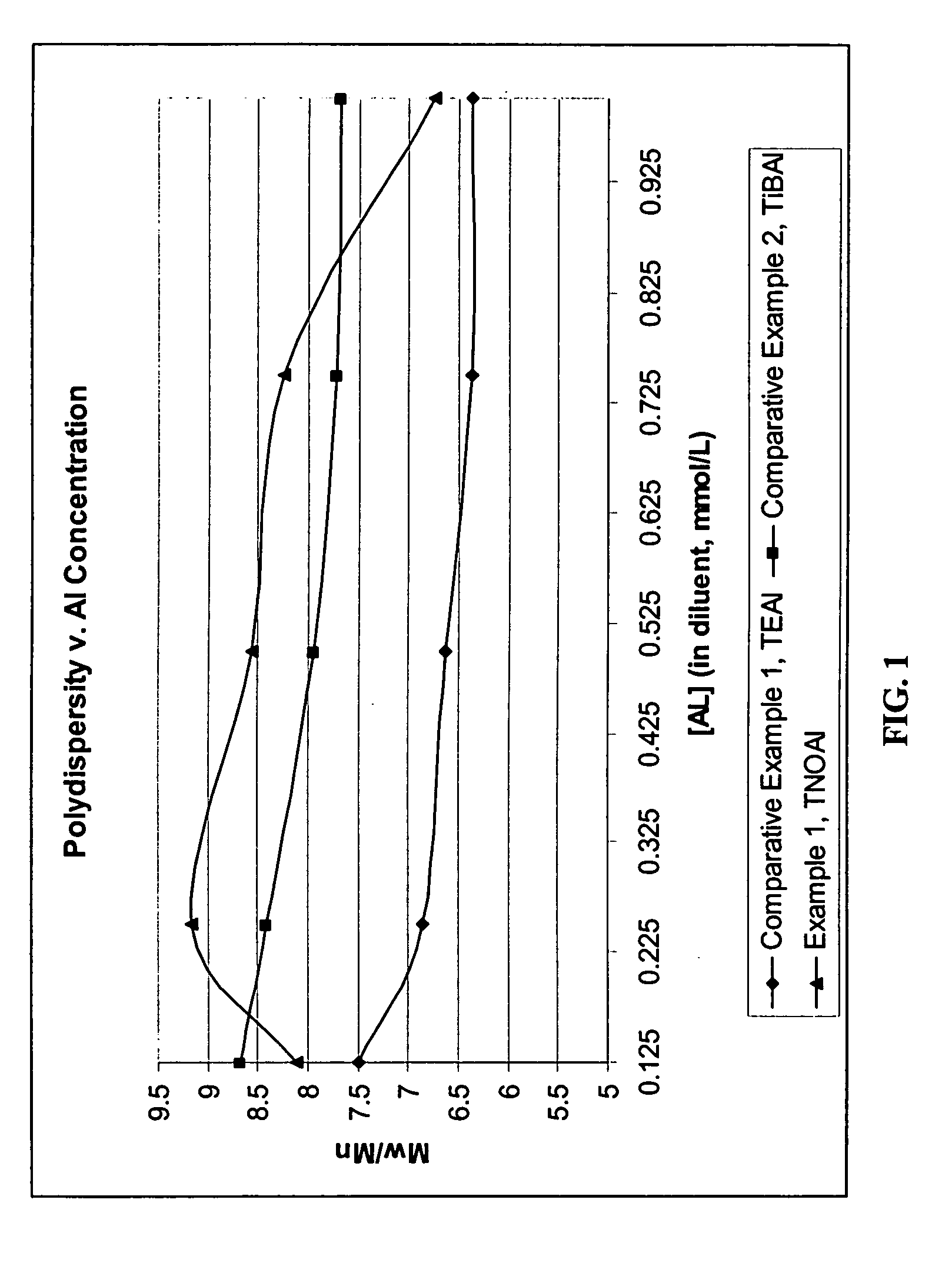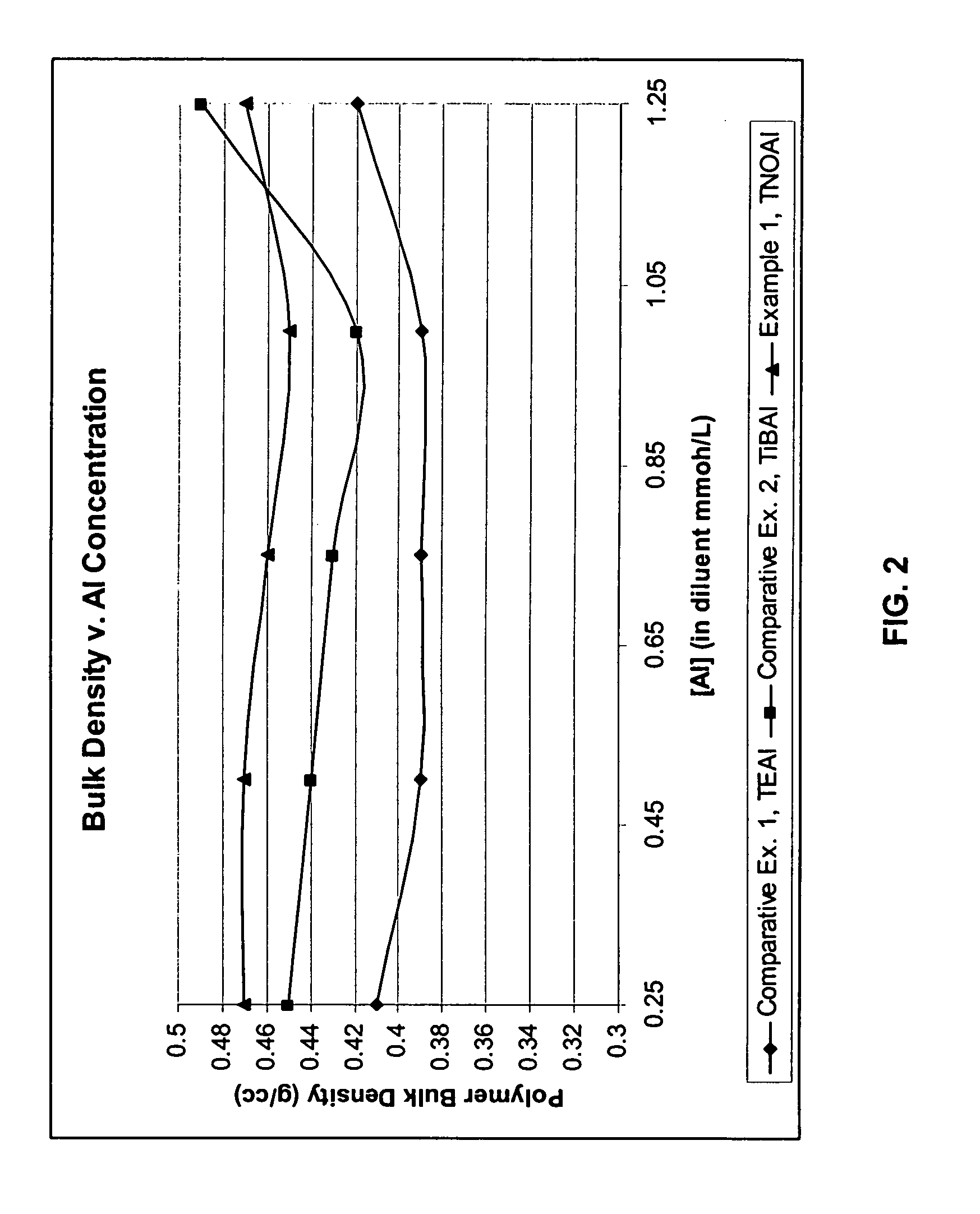Cocatalysts for olefin polymerizations
a technology of olefin and cocatalyst, which is applied in the field of polymerization, can solve the problems of difficult separation of butene and isobutylene from isobutane diluents, production difficulties may be encountered using these cocatalysts, and the use of zieg may not be easy, so as to achieve the effect of easy and effective separation and bulk density
- Summary
- Abstract
- Description
- Claims
- Application Information
AI Technical Summary
Benefits of technology
Problems solved by technology
Method used
Image
Examples
example 1
[0070] A Ziegler-Natta catalyst was prepared as follows. In a nitrogen purge box, 1412.25 g (2.00 moles) of butyl ethyl magnesium (BEM) solution, 27.60 g (0.060 moles) of TEAl solution (24.8% in heptane), and 189.70 g (1.20 moles) of DIAE were added to a 3 L round bottom flask. The contents were then transferred to a 20 L Buchi reactor via cannula under a nitrogen flow. The flask was then rinsed with approximately 400 ml of hexane which was transferred to the reactor. The stirrer was set to 350 rpm.
[0071] 2-ethylhexanol (543.60 g, 4.21 moles) was added to a 1 L bottle and capped. It was then diluted to a total volume of 1 L with hexane and added to the reactor. The initial head temperature was 25.3° C. and reached a maximum temperature of 29.6° C. Following the addition (which was performed over approximately 2 hours), the bottle was rinsed with 400 ml of hexane which was transferred to the reactor. The reaction mixture was left stirring at 350 rpm overnight under a nitrogen pressu...
PUM
| Property | Measurement | Unit |
|---|---|---|
| temperature | aaaaa | aaaaa |
| temperature | aaaaa | aaaaa |
| pressure | aaaaa | aaaaa |
Abstract
Description
Claims
Application Information
 Login to View More
Login to View More - R&D
- Intellectual Property
- Life Sciences
- Materials
- Tech Scout
- Unparalleled Data Quality
- Higher Quality Content
- 60% Fewer Hallucinations
Browse by: Latest US Patents, China's latest patents, Technical Efficacy Thesaurus, Application Domain, Technology Topic, Popular Technical Reports.
© 2025 PatSnap. All rights reserved.Legal|Privacy policy|Modern Slavery Act Transparency Statement|Sitemap|About US| Contact US: help@patsnap.com



